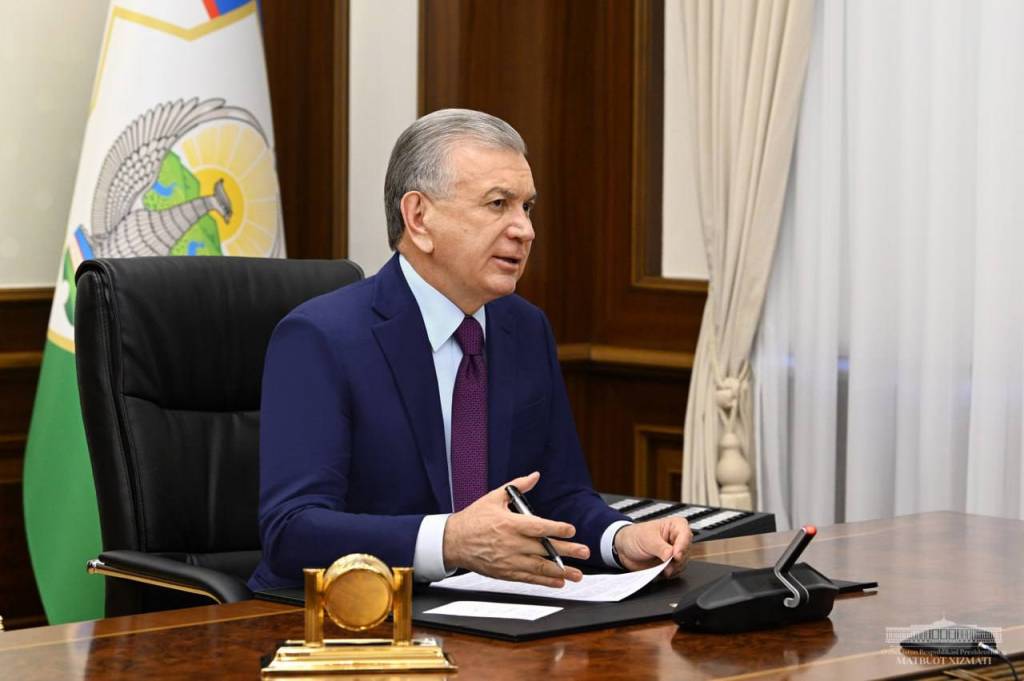WNAM MONITORING: President Shavkat Mirziyoyev signed the law “On the recognition of rights to illegally seized land plots and buildings and structures built on them”.
Many citizens of the country were waiting for a solution to this issue, which affected millions of families. According to preliminary data, there are over 3,600,000 land plots. The legal documents are not registered or incomplete.
The law consists of 6 chapters and 35 articles that recognize the rights to the following land plots and property:
1) land plots illegally seized by citizens before May 1, 2018, through the construction of individual housing and the buildings and structures built on them;
2) land plots occupied by citizens and organizations before May 1, 2018, over the area specified in the document, as well as the buildings and structures built on them;
3) land plots, the recognition of rights to which within the framework of the “one-time action” was not completed, as well as the buildings and structures built on them;
4) land plots allocated by the decision of the district (city) hokim before June 8, 2021, but not approved by the regional hokim or the Council of People’s Deputies;
5) residential premises on the territory of horticultural and viticultural partnerships and the land plot they occupied;
6) land plots of entrepreneurs located in small industrial zones before March 9, 2020;
7) land plots occupied by buildings and houses privatized by a state order;
8) land plots occupied by buildings and houses for which a decision of the hokim has recognized the right of ownership.
The law also clearly defines the basic conditions for recognizing rights. For example, the land plot must not be allocated to other persons or put up for auction, there must be no dispute over it, and there must be no contradiction to the general plan.
Rights are recognized in stages by region. Information and documents related to illegally seized land plots and buildings and structures built on them are coordinated through the Cadastre Agency’s automated information system, which also enters relevant information from 15 authorized organizations.
The regional justice department checks the completeness and legality of the collected documents. The results will be announced on the Cadastre Agency’s website and in mahalla corners. Citizens who receive a positive conclusion will be sent an SMS message, based on which a one-time payment is made. After this, the rights will be recognized quarterly by the decision of the regional Council of People’s Deputies.
The prosecutor’s office, internal affairs, agricultural inspection, ecology, and cadastre agencies establish state control over the law’s implementation. The law also pays special attention to public control. Thus, by the decision of the district Councils of People’s Deputies, public groups will be created in each mahalla. These groups will include a deputy of the district Council elected from the district where the mahalla is located, the chairman of the mahalla, and active citizens.
A one-time payment is charged for the recognition of rights to land plots under residential buildings, privatized or recognized as property of buildings and structures. The payment is 5 BCV in Tashkent, 3 BCV in Nukus and regional centers, 2 BCV in cities, and 1 BCV in other populated areas. Persons included in the Unified Register of Social Protection, as well as persons with disabilities, are provided with a discount.
The one-time payment is directed to cover the expenses of the cadastral and justice authorities, the Uzbekspace Agency. The remaining funds will be directed to initiative budget activities, that is, to mahallas.
The law will come into force in 3 months before explanatory and preparatory work will be carried out at the local level. It will remain in force until January 1, 2028.
It should be noted that work in this direction has already begun in the Republic of Karakalpakstan. By the Decree of the President of Uzbekistan of July 28, 2023, it was allowed to recognize the rights to undocumented residential buildings and land plots located in the region by the decision of the Jokargy Kenes of the Republic of Karakalpakstan.
After that, working groups were created in all districts and cities to study 43,432 houses built in the Republic of Karakalpakstan without title documents. Based on the analysis of land records and space images, the location, condition, and time of construction of the houses were checked.
Following a comprehensive discussion, the ownership of 27,590 residential buildings and the right to lease the land plots on which they are located was recognized.
The results of this noble policy have positively impacted the lives of more than 100 thousand citizens living in 27,590 houses. They now have the right to legally register their housing, sell it to another person, and put family members on permanent records. Also, owners will now be able to receive preferential loans for repairs or additional construction and, in the event of seizure of housing for public needs, demand compensation in accordance with the law.
The Law “On the recognition of rights to illegally seized land plots and buildings and structures constructed on them” will expand the scale of this noble work throughout the country. Suppose we accept that each of the more than 3 million 600 thousand land plots concerns an average of 3-4 citizens or entrepreneurs. In that case, this law will resolve the problems of more than 10 million people and create a legal basis for their future lives.


